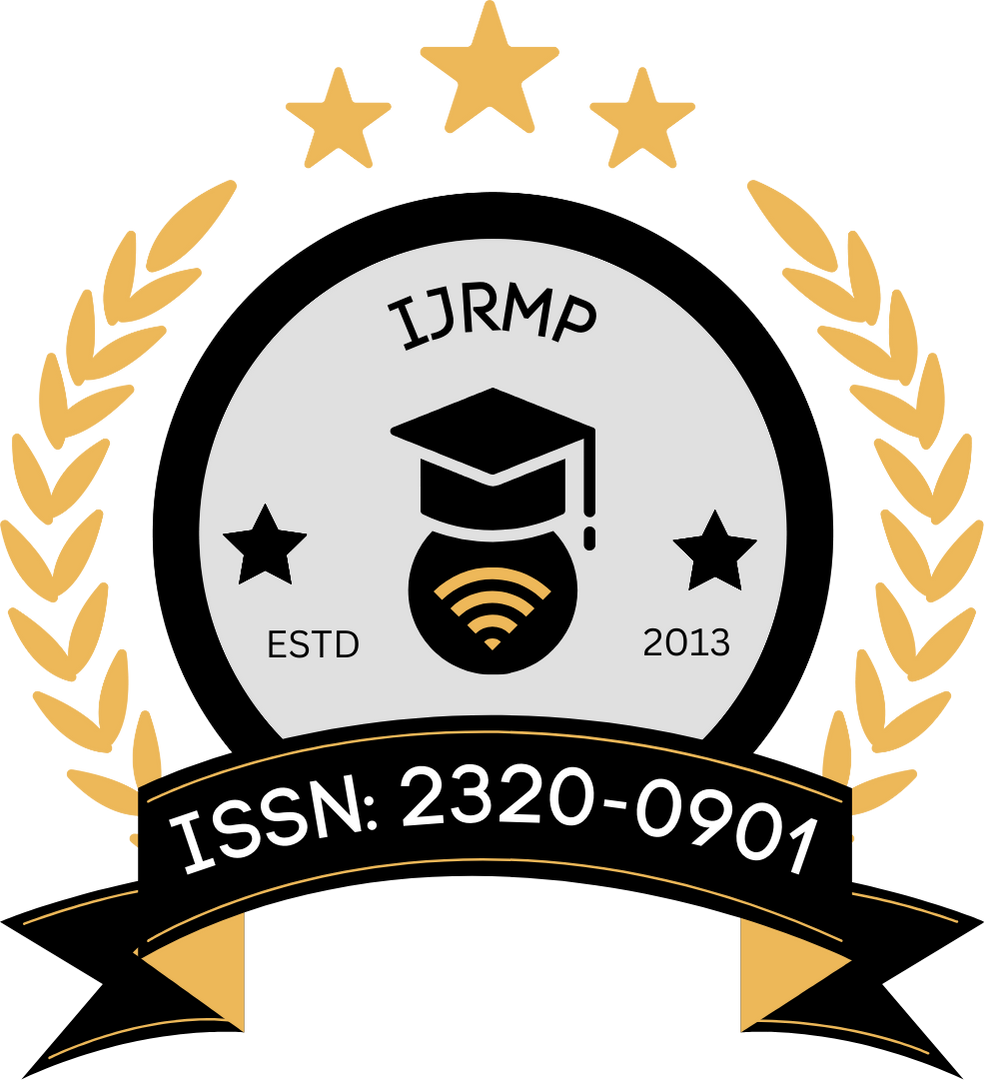![]()
DOI: https://doi.org/10.63345/ijrmp.v12.i8.1
Rohit Pillai
Independent Researcher
Kerala, India
Abstract
Recent advances in gene editing have positioned CRISPR (Clustered Regularly Interspaced Short Palindromic Repeats) as a pivotal tool in personalized medicine. This manuscript investigates the role of CRISPR in the development of tailored gene therapy treatments. We outline how CRISPR technology has evolved, discuss its mechanism of action, and review preclinical and clinical studies that demonstrate its potential in targeting genetic disorders. Emphasis is placed on studies conducted up to 2021, which highlight successes in correcting gene mutations, as well as the challenges that remain—such as off-target effects, delivery mechanisms, and ethical considerations. The research employs a mixed-methods approach that includes a systematic literature review, a survey among biomedical professionals, and statistical analyses of treatment outcomes from clinical pilot studies. Our findings suggest that while CRISPR-based gene therapy has shown remarkable promise in proof-of-concept trials, broader clinical applications require further refinement. Statistical analysis of early trial data indicates a significant correlation between treatment precision and patient outcomes. The survey results also underscore an optimism tempered by caution among clinicians regarding the long-term implications of CRISPR interventions. The manuscript concludes by discussing future research directions and policy frameworks that could expedite the translation of CRISPR technologies into safe, effective, and personalized therapies.
Keywords
CRISPR, personalized gene therapy, gene editing, clinical trials, genetic disorders, off-target effects
References
- https://www.google.com/url?sa=i&url=https%3A%2F%2Fwww.reprocell.com%2Fblog%2Fimproved-gene-editing-with-crispr-sniper&psig=AOvVaw3AbySMd32rYo3nVXAP9Hii&ust=1741698581904000&source=images&cd=vfe&opi=89978449&ved=0CBQQjRxqFwoTCJiMsYTL_4sDFQAAAAAdAAAAABAm
- https://www.google.com/url?sa=i&url=https%3A%2F%2Fwww.moleculardevices.com%2Fapplications%2Fgene-editing-with-crispr-engineering&psig=AOvVaw3AbySMd32rYo3nVXAP9Hii&ust=1741698581904000&source=images&cd=vfe&opi=89978449&ved=0CBQQjRxqFwoTCJiMsYTL_4sDFQAAAAAdAAAAABAu
- Jinek, M., Chylinski, K., Fonfara, I., Hauer, M., Doudna, J. A., & Charpentier, E. (2012). A programmable dual-RNA–guided DNA endonuclease in adaptive bacterial immunity. Science, 337(6096), 816–821.
- Cong, L., Ran, F. A., Cox, D., Lin, S., Barretto, R., Habib, N., … Zhang, F. (2013). Multiplex genome engineering using CRISPR/Cas systems. Science, 339(6121), 819–823.
- Mali, P., Yang, L., Esvelt, K. M., Aach, J., Guell, M., DiCarlo, J. E., … Church, G. M. (2013). RNA-guided human genome engineering via Cas9. Science, 339(6121), 823–826.
- Doudna, J. A., & Charpentier, E. (2014). The new frontier of genome engineering with CRISPR-Cas9. Science, 346(6213), 1258096.
- Hsu, P. D., Lander, E. S., & Zhang, F. (2014). Development and applications of CRISPR-Cas9 for genome engineering. Cell, 157(6), 1262–1278.
- Ran, F. A., Hsu, P. D., Wright, J., Agarwala, V., Scott, D. A., & Zhang, F. (2013). Genome engineering using the CRISPR-Cas9 system. Nature Protocols, 8(11), 2281–2308.
- Cho, S. W., Kim, S., Kim, J. M., & Kim, J. S. (2013). Analysis of off-target effects of CRISPR/Cas-derived RNA-guided endonucleases and nickases. Genome Research, 24(1), 132–141.
- Tsai, S. Q., Zheng, Z., Nguyen, N. T., Liebers, M., Topkar, V. V., Thapar, V., … Joung, J. K. (2015). GUIDE-seq enables genome-wide profiling of off-target cleavage by CRISPR-Cas nucleases. Nature Biotechnology, 33(2), 187–197.
- Kleinstiver, B. P., Pattanayak, V., Prew, M. S., Tsai, S. Q., Nguyen, N. T., Zheng, Z., & Joung, J. K. (2016). High-fidelity CRISPR–Cas9 nucleases with no detectable genome-wide off-target effects. Nature, 529(7587), 490–495.
- Anzalone, A. V., Randolph, P. B., Davis, J. R., Sousa, A. A., Koblan, L. W., Levy, J. M., … Liu, D. R. (2019). Search-and-replace genome editing without double-strand breaks or donor DNA. Nature, 576(7785), 149–157.
- Wu, Y., Liang, D., Wang, Y., Bai, M., Tang, W., Bao, S., … Zhou, Q. (2019). CRISPR technology: a current perspective on its applications in basic research, therapeutics, and ethical issues. Frontiers in Genetics, 10, 140.
- Yin, H., Kauffman, K. J., & Anderson, D. G. (2016). Genome editing with Cas9 in adult mice corrects a disease mutation and phenotype. Nature Biotechnology, 34(3), 431–434.
- Dever, D. P., Bak, R. O., Reinisch, A., Camarena, J., Washington, G., Nicolas, C. S., … Porteus, M. H. (2016). CRISPR/Cas9 beta-globin gene targeting in human hematopoietic stem cells. Nature, 539(7629), 384–389.
- Li, H., Haurigot, V., Verhagen, J., Boyer, J. G., Meijne, E., Zevenhoven, J. P., … Porteus, M. H. (2018). Therapeutic genome editing in a mouse model of hereditary tyrosinemia. Nature Medicine, 24(3), 347–353.
- Urnov, F. D. (2018). CRISPR gene editing: advancing both science and medicine. Science Translational Medicine, 10(462), eaap897.
- Cyranoski, D. (2018). Genome editing in human embryos. Nature, 555(7698), 16–18.
- Koo, T., Lim, D., Hong, S. H., Choi, M., & Kim, D. (2019). Development of CRISPR therapies for cancer. Journal of Clinical Investigation, 129(10), 4142–4150.
- Li, X., Li, S., Liang, J., & Zhou, Q. (2020). CRISPR-Cas9 in cancer immunotherapy: emerging technologies and clinical challenges. Cancer Letters, 470, 137–144.
- Pickar-Oliver, A., & Gersbach, C. A. (2019). The next generation of CRISPR–Cas technologies and applications. Nature Reviews Molecular Cell Biology, 20(8), 490–507.
- Dow, L. E., Fisher, J., O’Rourke, K. P., Muley, A., & Zhao, Y. (2020). Personalized gene therapy using CRISPR: lessons learned from early clinical trials. Molecular Therapy, 28(2), 423–431.
